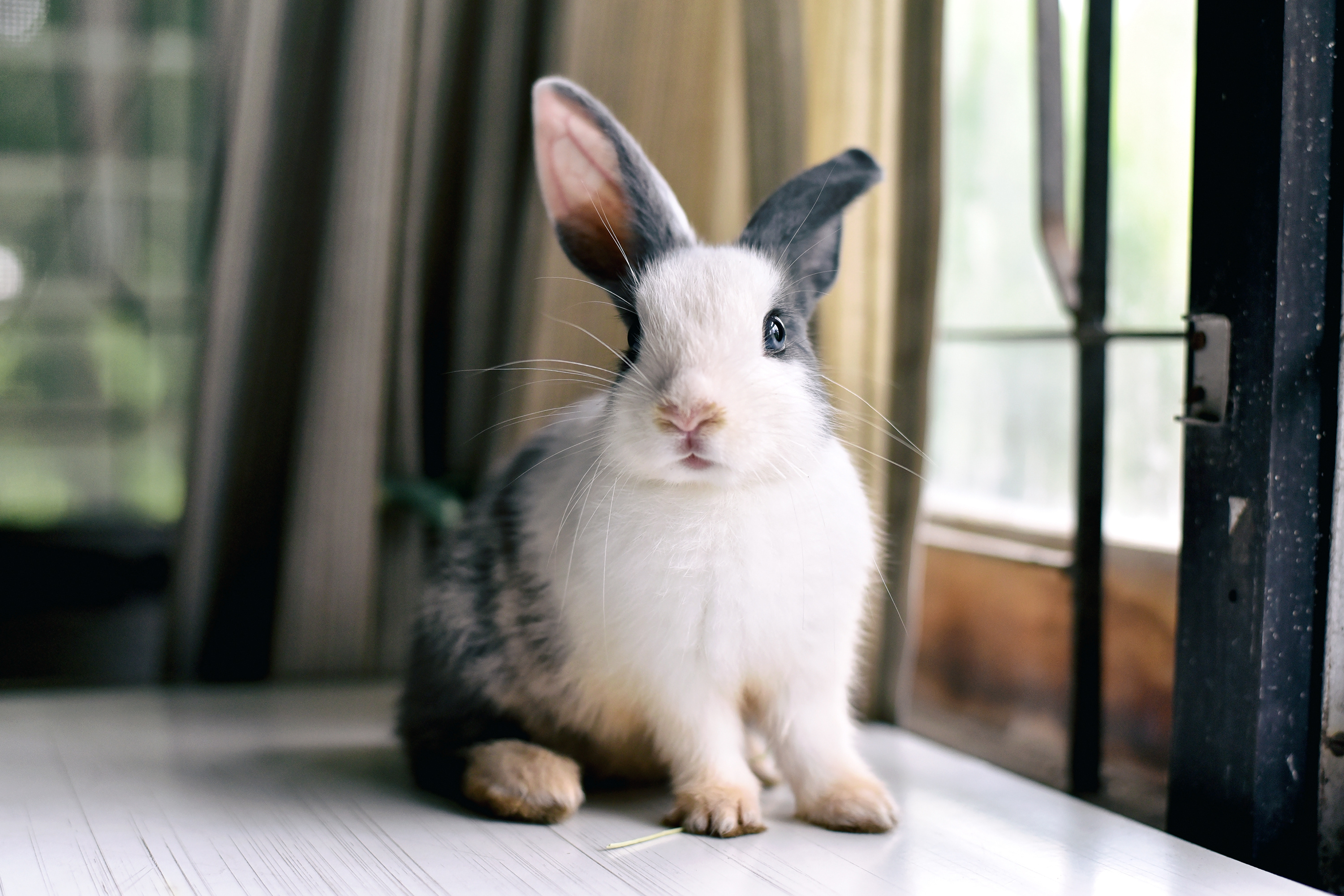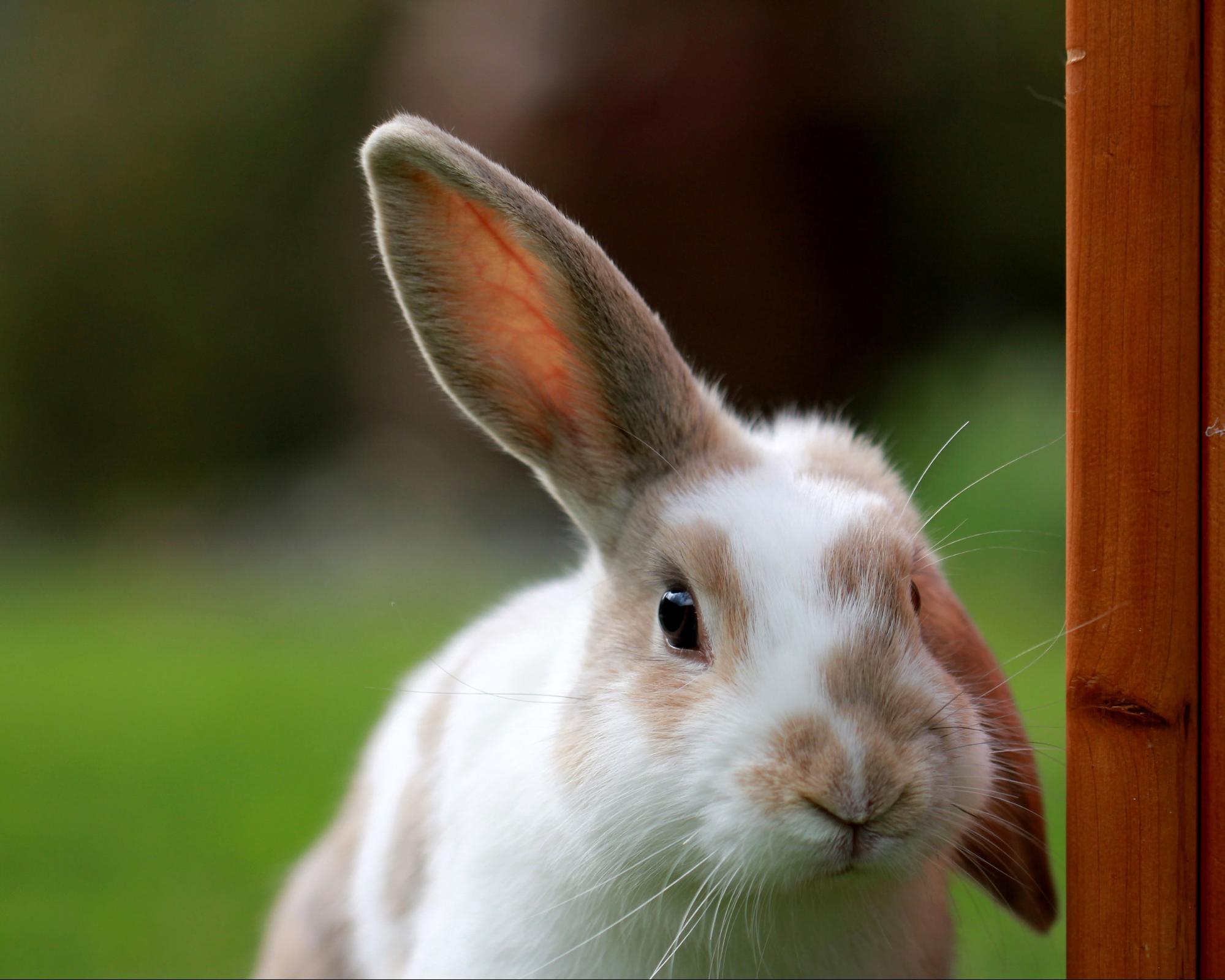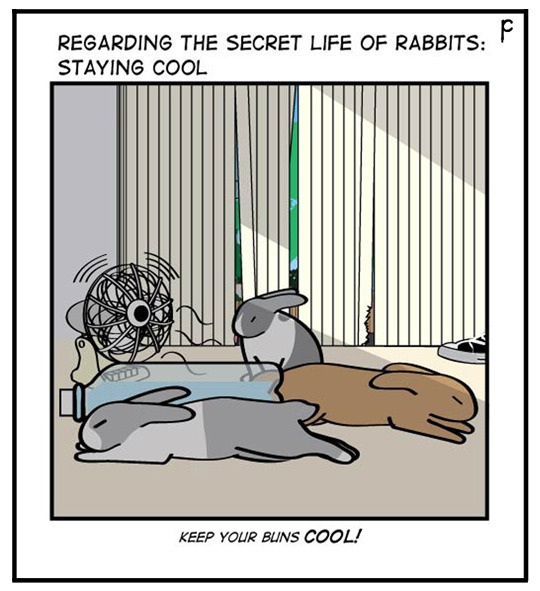Heatstroke Warning Signs in Rabbits You Can’t Afford to Miss
Article - 4 min read • Updated Jun 01, 2025
Medically reviewed by Dr. Claire Tan, BVSc (Qld.), BAppSc (Qld.)

They’re adorable, small, and furry but unfortunately stuck in Singapore’s year-round heat. Rabbits are particularly vulnerable to high temperatures. As responsible pet owners, we need to recognise the signs of heatstroke in rabbits and take preventive measures when the weather gets unbearable.
Why Do Rabbits Overheat So Easily?
Unlike us, rabbits cannot sweat. Their primary method of regulating body temperature is through their ears, where heat is released via a network of blood vessels. But this method is only effective up to a certain point.

Small mammals such as rabbits are more sensitive to heat than cats or dogs. According to the RSPCA, rabbits are at risk of heatstroke when temperatures rise above 35°C, which can happen in Singapore. Especially in poorly ventilated HDB or condominium flats, these indoor spaces heat up quickly during the day, particularly in rooms exposed to afternoon sun, even if your rabbit is kept out of direct sunlight.
Even rabbits housed indoors in cages aren’t safe if airflow is poor or if their enclosures are exposed to direct sunlight or retained heat.
The Warning Signs You Should Never Ignore
Heatstroke happens when your rabbit’s body temperature rises excessively and cannot cool down, leading to life-threatening conditions such as organ failure or death.
Look out for these symptoms:
Drooling or salivating excessively
Rapid, shallow breathing (hyperventilating)
Lethargy or acting unusually quiet and sluggish
Uncoordinated movements or trembling
Red or hot ears
Seizures or fits
Loss of consciousness or coma
These signs also apply to other small mammals like guinea pigs, hamsters, and chinchillas.
What to Do When Your Rabbit Overheats
If you suspect your rabbit is suffering from heatstroke, treat it as an emergency and contact your vet immediately.
While waiting for transport or advice, follow these first aid steps to cool your bunny down gradually:
Move to a cool, shaded area away from direct sun or heat
Turn on a fan nearby but do not blow it directly at your rabbit
Dampen a towel with cool (not ice-cold) water and gently wipe your rabbit’s fur or ears. Avoid soaking your rabbit completely
Offer cool drinking water but do not force-feed if your rabbit refuses
Use a cold (not frozen) compress wrapped in cloth and place it near (not on) your rabbit for comfort
*Important Note: Avoid sudden temperature changes such as ice baths or air-conditioned blasts as these can cause shock.
Even if your rabbit seems better, a full veterinary examination is crucial to check for organ damage or hidden complications.
How To Keep Your Rabbit Cool Every Day
Prevention is always better than cure. Here are practical ways to keep your rabbit cool in Singapore’s hot weather:
Build a Safer, Cooler Space
Avoid direct sunlight indoors and outdoors, especially during midday
Use blackout curtains, UV window film, or bunny-safe blinds to block heat
Turn on fans or air conditioning, especially during heatwaves
Give Them Something Cool to Rest On
Let your bunny roam on ceramic tiles or marble floors, which dissipate heat better than plastic cage bases
Provide cooling mats made for pets or unglazed ceramic slabs
Freeze What You Can
Freeze a plastic bottle (remember to leave room for expansion) and wrap it in a towel before placing it in the cage. Or use a wrapped up icepack.
Supervise your rabbit to prevent chewing on the plastic

Keep the Water Flowing
Offer fresh water daily in multiple forms e.g. bowls, bottles or even leafy vegetables with high water content
Clear water containers regularly to prevent bacterial growth
Find out more about what to feed your rabbit to keep him/her happy and thriving!
Trim the Fluff
Brush your rabbit frequently to remove excess fur that can trap heat especially if your rabbit is a long-haired breed
Watch Closely
Check their ears and behaviour daily so you know what is the norm for your pet and can spot anything amiss especially during hot days
If your home tends to get stuffy consider investing in a digital thermometer and hygrometer to monitor indoor heat and humidity levels
Indoors Isn’t Always Safe
Even rabbits in cages can overheat! Don’t assume your rabbit is safe just because she’s indoors. Singapore’s warm humid climate combined with enclosed spaces can lead to stuffy overheated environments without proper ventilation.
A rabbit living in an indoor cage near a window or in a poorly ventilated room can still experience heat stress.
How to Give Your Rabbit a Happier Life in the Heat
As bunny parents, it’s our responsibility to keep their environment cool clean and safe. A few small changes can make a big difference in protecting your rabbit from heat-related emergencies.
If you ever notice unusual behaviour or signs of distress don’t wait. Contact your trusted rabbit-savvy vet for advice or care.
Need help? Contact Gaia Vets today
Our team is experienced in treating rabbits and small mammals. Whether you need a health check or advice on how to bunny-proof your home from the heat we’re happy to help.